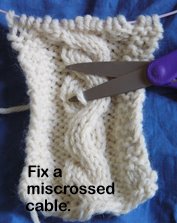.
I knew keratin was protein, but as I listened to a lecture about single-celled organisms that changed the planet during the Cretaceous (some of which -- diatoms -- had silica shells, and some of which -- dinoflagelates -- had chitinous shells), I began to wonder what chitin is.
According to Wikipedia: "Chitin (C8H13O5N)n (/ˈkaɪtɨn/ KY-tin) is a long-chain polymer of a N-acetylglucosamine, a derivative of glucose, and is found in many places throughout the natural world. It is the main component of the cell walls of fungi, the exoskeletons of arthropods such as crustaceans (e.g., crabs, lobsters and shrimps) and insects, the radulae of molluscs, and the beaks and internal shells of cephalopods, including squid and octopuses. The structure of chitin is comparable to the polysaccharide cellulose, forming crystalline nanofibrils or whiskers. In terms of function, it may be compared to the protein keratin."
Sugar. Chitin is a derivative of sugar...................
Interesting.
Just for grins, here's what Wikipedia says about keratin: "Keratin (/ˈkɛrətən/[1][2]) is a family of fibrous structural proteins. Keratin is the key structural material making up the outer layer of human skin. It is also the key structural component of hair and nails. Keratin monomers assemble into bundles to form intermediate filaments, which are tough and insoluble and form strong unmineralized tissues found in reptiles, birds, amphibians, and mammals. The only other biological matter known to approximate the toughness of keratinized tissue is chitin.[3][4][5]"
Now we know!
That last sentence is interesting, don't you think?
Now I'm thinking about bones and teeth, and am wondering what "toughness" means. Thank goodness for Wikipedia: "In materials science and metallurgy, toughness is the ability of a material to absorb energy and plastically deform without fracturing.[1] One definition of material toughness is the amount of energy per volume that a material can absorb before rupturing. It is also defined as the resistance to fracture of a material when stressed. Toughness requires a balance of strength and ductility.[1]"
That's interesting, too. I do not know what "ductility" is (and, as I think about it, I probably don't know what they mean by "strength," either, in this context), but I think I'm going back to my lecture now, rather than wandering further afield.
So grateful to be able to look all of this stuff up so easily!!!!!!
.
Tuesday, September 02, 2014
Subscribe to:
Post Comments (Atom)

















2 comments:
Ductility is a concept with a very simple definition; the capacity of a material to be drawn into bars, rolled into sheets, or extruded into wires without breaking. In other words, the ability of a material to deform when it is exposed to tensile stress. For example, soft metals such as the coinage metals (copper, silver, gold) are very ductile. Others, such as the harder metals (tungsten, osmium), have low ductility are are liable to break if you try to extrude them.
Strength is more difficult to define, and for that reason it is more useful to define materials in terms of other properties:
-Ductility you already know
-Malleability: ability of material to deform under COMPRESSION stress without breaking
-Scratch hardness: ability to withstand being scratched by another material. Not a very useful measure, to be honest
-Indentation hardness: ability to withstand plastic deformation from a unilateral force by a hard material (usually done with a diamond prism indenter, but also large steel or tungsten bearings)
-Compressive strength: Usually measured by the bulk modulus, it is the capacity to resist compressive stress (i.e., incompressibility). This is one property where bones excel
-Tensile strength: Usually measured by the elastic modulus (Young's modulus); the capacity to resist tensile stress. Bones do not have particularly good tensile strength
-Torsional stress: Capacity to resist torsional (i.e., twisting) stress. Bone usually fares poorly against torsional stress.
-Flexibility: Capacity of a material to return to its original shape once it has been deformed. Keratin has very good flexibility
Thank you, Edgar! :-)
Post a Comment